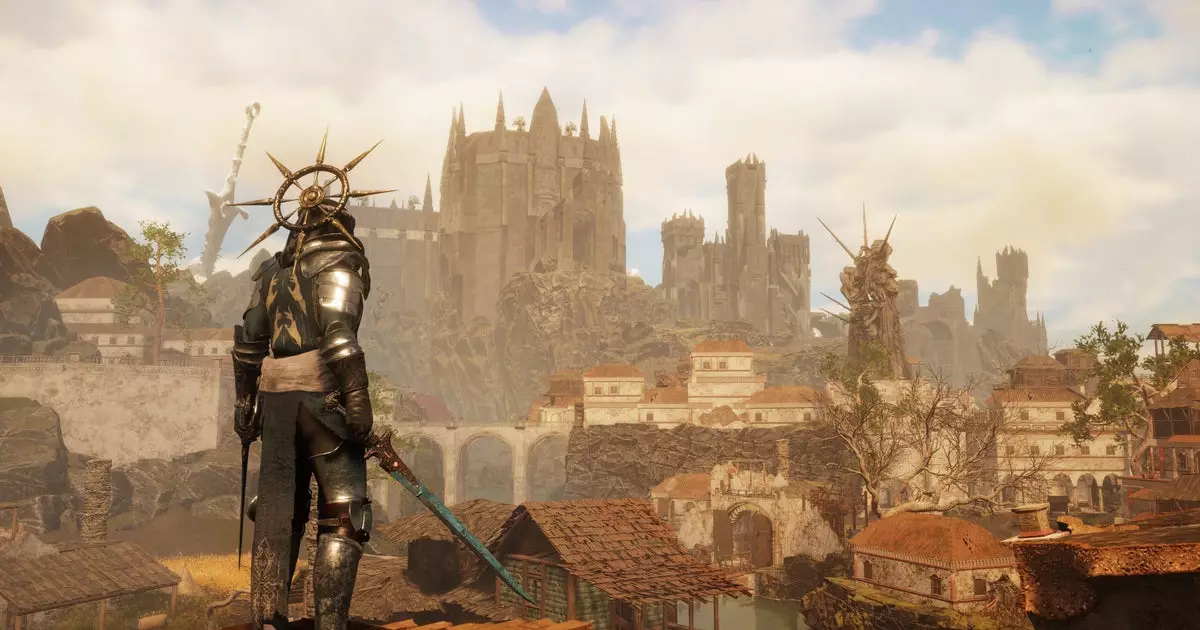The landscape of role-playing games (RPGs) is richly populated by titles that challenge players to explore vast, sprawling universes. However, recent players wanting an alternative to the mainstream titles like Skyrim and the remastered version of Oblivion might want to turn their attention towards Tainted Grail: The Fall of Avalon. This game is making waves in the gaming community, sparking curiosity and anticipation among those seeking immersive narratives and engaging mechanics. The promising feedback surrounding Tainted Grail is worth exploring, though it certainly raises some eyebrows for differing reasons.
The Allure of Avalon: A Dark and Eerie Adventure
Set in the aftermath of Arthurian legend, Tainted Grail transports players to a realm steeped in darkness and decay — a world suffering from the scars of its past. The game takes place 600 years after King Arthur’s demise, and its fantasy world is beleaguered by plague and continuous conflict. This narrative framework offers an intriguing backdrop, inviting players into a setting defined by hardship and unsettling beauty. As you traverse through the game’s three distinct zones, you’ll encounter a tapestry of sorrow, strife, and monumental tasks that are said to fill 50 to 70 hours of gameplay.
With over 200 side quests, activities like house decoration, farming, and potentially charming illustration mechanics are present to fill those hours. While it seems like an admirable ambition, one wonders if players will find genuine innovation or just recycled concepts within these tasks. Are we witnessing the evolution of RPG gameplay, or does it merely present the familiar whys and wherefores of busy work that has plagued the genre?
A Wyrd World of Chaos and Choice
Among the intriguing mechanics in Tainted Grail is the foreboding presence of “Wyrdness.” This chaotic primordial force awakens during nighttime, integrating an element of unpredictability that elevates encounters but also adds anxiety to exploration. From a poetic standpoint, it captures the essence of fear we often associate with the darkness — we tread carefully, bearing the weight of uncertainty. However, one must acknowledge that relying on such themes might add to the tension but could also risk feeling stale after countless unsatisfying iterations in horror or challenge mechanics.
Creating characters in Tainted Grail appears to lean heavily into open-ended customization. Players can shape their avatars with diverse skills – be it a berserker alchemist or a stealthy archer. The promise of limitless playstyles sounds appealing but often presents a double-edged sword that some games have faltered upon. Developers seldom fulfill such lofty promises when it comes to delivering truly unique gameplay paths. This leads one to question whether Tainted Grail can genuinely differentiate itself or if it falls into the quagmire of artifice.
Morally Grey Choices: Breaking New Ground or Playing it Safe?
The storyline touts a “mature, morally grey” narrative, a descriptor that often evokes skepticism among seasoned gamers. Describing tales steeped in moral ambiguity as “adult” doesn’t convincingly guarantee provocative storytelling or innovative character development. Industry jargon aside, one wonders whether this thematic choice will offer genuine depth or simply tread down the narrative paths once well-traveled by games before it. Gamers have grown weary of being promised complexity, only to be delivered with superficial character arcs and predictable outcomes.
While the surrounding lore of corruption caused by the dreadful “Red Death” presents an opportunity for insightful storytelling and character interactions, it remains to be seen whether its execution will leave players deeply engaged or just passively entertained. Developers must embrace the responsibilities that come with tackling serious themes, all while ensuring gameplay remains engaging and thought-provoking.
A Glimpse into the Artistic Vision and Environmental Aesthetics
Despite uncertainties regarding some of its gameplay elements, Tainted Grail certainly captures the eye with its visual artistry. The theme of “everlasting autumn” serves as a poignant metaphor for decay and rebirth; the environment design draws players into a world that feels both bizarre and beautifully haunting. The allure of its striking visuals may serve as an enticing lure for many players who crave exploration within an evocative landscape.
While players frequently seek adventure and challenge, there’s a growing appetite for artistry in games, a yearning for resonant visuals that augment the emotional weight of their narratives. As Tainted Grail unfolds, its ability to balance gameplay mechanics, storytelling, and visual design will ultimately determine its legacy in the expansive RPG genre. It’s a compelling challenge that awaits not just the developers, but players who are eager to immerse themselves in the daunting world of Avalon.

